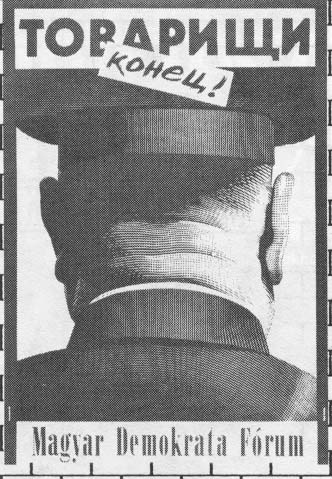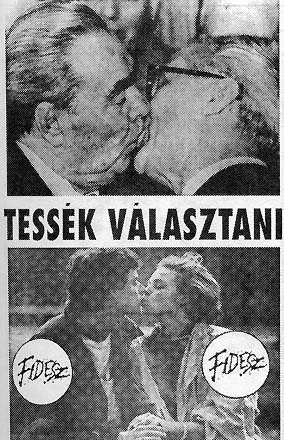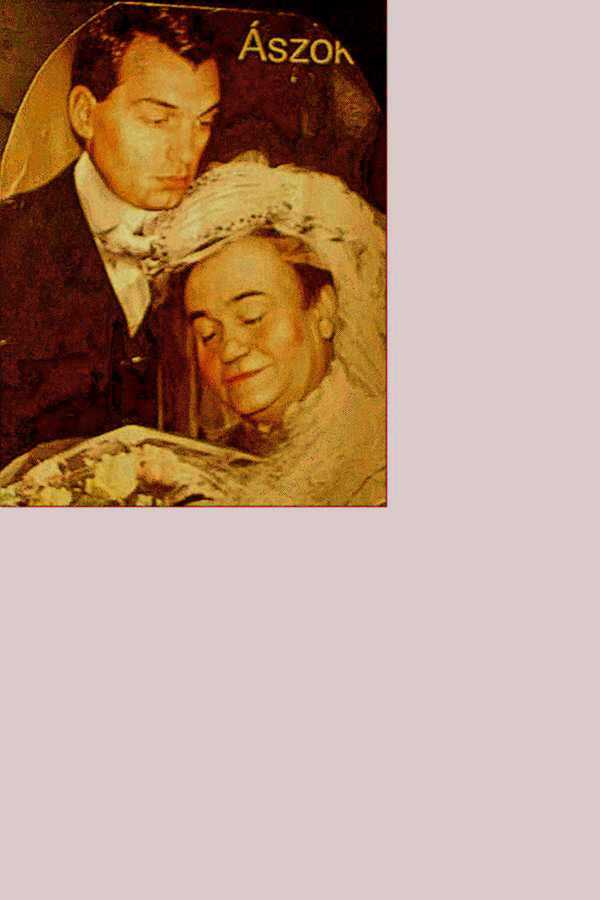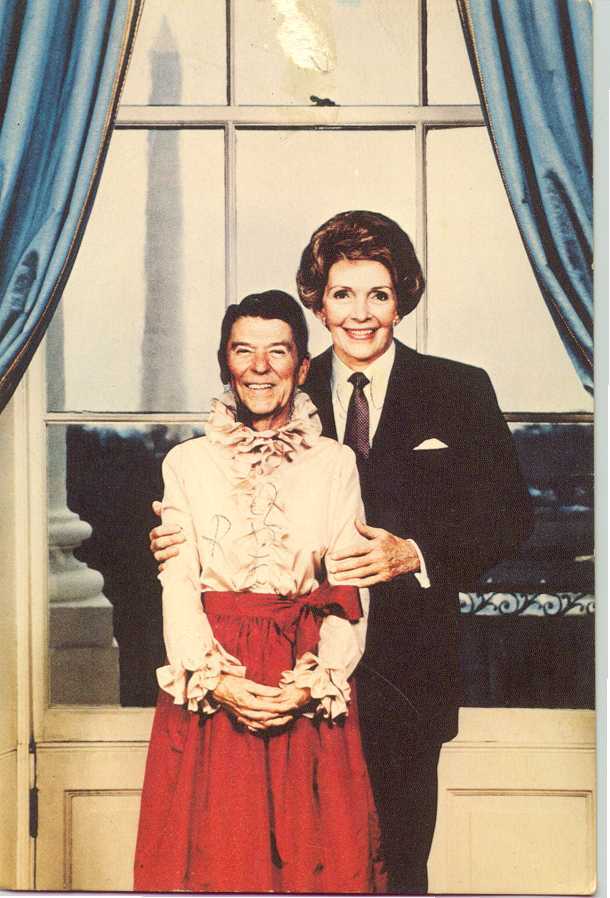|
1. Are bodies born or made?
The history of 20th-century discourses about the body is marked by a resolute search for the definitions and "determinable" features of the body. This project has always gone hand in hand with efforts to conceptualize the genealogy and evolution of (post)modern identity. This development has also meant the further fragmentation of the already dichotomic Western view of the human subject. If we take an overview of the major theories of the body, we find at least as many "bodies" as theoretical approaches and epistemologies. According to the most widespread classification, there are three bodies at three separate but overlapping conceptual and analytic levels.(2) The individual body is conceptualized in phenomenological theories of the body while the social body means the symbolic, representational uses which are found most commonly in structuralist theories. The third and most widely known in contemporary post-structuralist theory is the body politic which is formulated through the regulatory practices and controls of power. The fact that we can find a growing number of "bodies" in theories of the social sciences reflects both the significance and indeterminacy of the "body-problem" in contemporary society and also uncertainties in relation to the questions of identity. Naturally, these "bodies" also signify the major problems of (the body of) society and its institutions of power which label individuals through their bodies as deviant or normal, impure or clean, needful of control or disciplined. 2. Surfaces and boundaries of the body-the body as surface and boundary
This is a question not only of the diversity of theories and the boundless fragmentation of the body, but the need for a new, "holistic" model also seems to be formulated in different criticisms of contemporary theories. One of the most common arguments against analyses of the discursive or textual construction of bodies-i.e. how the body is seen and portrayed-states that they tell little about the body's implication in human agency, of how people experience the "lived body".(4) Another frequent critique is that the body should not be regarded simply as an object of sociological investigation, but as an inherently sociological and historical phenomenon. Further, there are authors who emphasize that we have to find the place of psychical representations in conceptualizing the body not in opposition to the social dimension but as necessarily interactive with it, to create a living subjectivity, a corporeality of the body.(5) In this regard the body itself has to be understood as a "threshold" or a "borderline" concept that not only reflects both the diversity and indeterminacy of its components but also involves the notion of totality. The Janus-faced concept of the border inherently refers to both fragmentation and non-differentiation. Does this "totality" of the body suggest the (re?)unification of the above-mentioned fragmented aspects? Does it mean the desire for the demolition of boundaries between different concepts and theories? Are we fascinated by the indeterminacy of the body or, on the contrary, do we feel embarrassed-even scared-by it? 3. Bodies in transition-representations of the body during political transition
1989-90 was the period of "transition from dictatorship to democracy" in the Central European communist countries. As part of this historical process, free election was held in Hungary in the spring of 1990-this event led to the formation of the first non-communist government for more than forty years. Before the election an extremely heated and exciting campaign had taken place-the parties, most of them newly created, not simply the revitalization of the old, "historical" ones-
Understandably, the Russians at that time were not particularly popular in Hungary. The inventiveness of the poster was such that it was able to manipulate this unpopularity and concentrate it around the body of a Russian man, a soldier, as the representative of the Russians in general. The soldier-figure has no face, no individuality; it is the Soldier who is, as Klaus Theweleit shows in the second volume of his aforementioned book, the "phallic weapon".(13) It is instructive to take a glance at the picture reproduced also in Theweleit's book (p. 83): The Hollywood actor Erich von Stroheim in the role of an officer whose primary sexual characteristic is: German (see fig. 2.).
the abject is not an ob-ject facing me, which I name or imagine. Nor is it an ob-jest, an otherness ceaselessly fleeing in a systematic quest of desire. What is abject is not my correlative, which, providing me with someone else as support, would allow me to be more or less detached and autonomous. The abject has only one quality of the object-that of being opposed to I. If the object, however, through its opposition, settles me within the fragile texture of a desire for meaning, which, as a matter of fact, makes me ceaselessly and infinitely homologous to it, what is abject, on the contrary, the jettisoned object, is radically excluded and draws me toward the place where meaning collapses.(14)
The function of transforming the Russian body into an abject is not simply to get rid of the occupying forces-it is about the radical exclusion of the former authority from the collective identity, a radical redefinition of this identity which excludes "foreigners". This is not the place to discuss the further implications of this poster, namely, its nationalist overtones which became evident subsequently in the ideology of the party in whose name the poster was originally issued. Nevertheless, the Russian figure represents here not only the "invaders" but the filthy, malignant, threatening Other in general. The spectacle puts the finishing touch to the removal of the remains of the Other. As Roland Barthes put it: This poster, however does not tell us what happens after one gets rid of the "comrades". What happens after they crossing the border? What is the power which is going to replace the old one-the power of the "comrades"? What happens after the father the Big (Br)other has been killed? 4. The promise of unlimited jouissance with no disciplinary Gaze The next poster we have selected shows exactly what happens after killing the father. (see picture 3.)
In the upper part of the poster we see a well-known picture from the seventies: Leonid Brezhnev, the Soviet party leader, and Erich Honecker, that of East German greeting each other. The two old men kiss each other on the mouth-which was a gesture unusual even among Communist leaders who generally used to obey to the old Russian custom of men's ritual embracing and kissing (on the cheeks). In fact, Erich Honecker was known as one of the most servile Communist leaders-but the point here is not simply the political content of the encounter of these two men. The point is the grotesque character of their kissing in the eyes of the contemporary East European viewers who suffered several decades under these leaders' hated gerontocracy-in contrast to the picture on the lower part of the poster which shows a pair of young lovers kissing. The slogan says: MAKE A CHOICE! Thus, the FIDESZ poster shows what is going to happen when "they" leave-for ever. It is then "we" who occupy their place-WE, the young, healthy, normal, heterosexual people, instead of the old, disgusting, perverse, homosexual figures. They are the "abjects" now, and making a choice means an absolute break between the past and the future. Why does the picture of the two old political leaders kissing call forth the strong feeling of rejection in fantasy? Why do they become the object of disgust and abjection? It is not only because of the-rather direct-message that these leaders symbolize the hateful and oppressive ancien régime. This is (the fantasy-image of) the Leader here who has become comic and impotent since he has lost all of his strength and power. Formerly, the Leader was strong even in his death; Lenin's embalmed corpse dominated not only Red Square in Moscow but the fantasy of Soviet people with the slogan "Lenin lived, Lenin lives, Lenin will live!" (and, on the other hand, filthy and often obscene jokes about the mummified body and its-imagined-sexual parts). The doubling of the Leader in the picture may also mean symbolically that he is turning towards himself-kissing himself-in a perverted narcissistic manner. He has lost all of his threatening characteristics since he does not look at us, does not want to communicate even in his usual one-sided, ordering, prohibiting manner. Similarly to the Russian officer on the poster described above, we cannot see the eyes of the Leader which means that there is no disciplinary gaze monitoring us, the totalitarian leader has been losing his authority. The "Big (Br)other" is not watching you any more. His only potential is directed inward, turning to the Self in a deadly manner-has no capacity to take part in development, is unable to contribute to the sustaining of the Self (the body-self of society) in a creative manner. He can no longer hold the function of being the Ego-ideal for the group, or for the whole society. The other possible source of rejection revealed by the picture is the multiplication of objects which, as Freud says, can be regarded as sources of the feeling of the uncanny.(16) The multiplying of objects is uncanny since-in Lacanian terms-the Real is lost through doubling, the immobilization, the freezing of time.(17) The possibility of change, the chance of (a new) life is clearly marked by the contradictions of the two pictures in the poster, which is a perfect image of the borderline nature of transition. The second picture shows a young man and a woman in an idyllic scene, kissing each other in a state of Paradise. The slogan "Make a choice"--like another FIDESZ slogan form the 1990 election campaign: "Listen to your heart, vote for Young Democrats!" invites the viewer to follow his/her own desire, promises the possibility of unlimited jouissance without the disciplinary gaze of the Leader (Father-God). The slogan of the radical student movement of the sixties, "Make love, not war" arrived in the (ex)Soviet Bloc, replacing Communist asceticism and totalitarian "fear of the feminine" (Theweleit) with pure jouissance. This strong emotional message of the poster echoes our ultimate desire of being part of the primal scene, remaining there forever, being man and woman, father and mother, having the chance of being anything and anyone we like. This strongest wish is related to our desire for unrestricted freedom, for non-differentiation, for indeterminacy. This is a regressive, infantile desire of remaining at the border, being the border, not accepting the disciplinary law of the Father. Although this message is very attractive, it contains substantial dangers as well. 5. The double-bind nature of the border
Identification with the border, "remaining stuck in" the Oedipal dilemma threatens the subject with the end-result of missing identity. As an example we can mention hysteria which is an often used metaphor for the fragmentation of (fin-de-siècle) bodies and identities. The hysteric is someone who is looking for the unlimited possibility of choosing identity but is unable to make any decision. We may suppose that there must be some kind of anxieties (besides desire) which contribute to the ambivalence about "making a choice". The hysteric is not able to escape from the Oedipal circle, because s/he is afraid of the suffocating, death-bearing qualities of the "good" mother (and her womb) but at the same time s/he does not want to leave its safety and warmth, and simultaneously s/he is attracted to the world of the father, but scared of the power and dominance it symbolizes. So s/he wants to be neither mother nor father, but desires to be both (or neither).(18). S/he wants to remain there, at the source of beginning, the place of origin. S/he does not want to be either female or male, but wants to be both (or neither) of them, wants to remain indeterminate (19). S/he is struggling for non-differentiation, for a "borderline" body and-as Juliet Mitchell has put forward-a traditionless Self. S/he wants to be the Origin, s/he wants to be the Secret, the ultimate Truth. We know from classical and contemporary cases of hysteria that the hysteric pays the price of her/his never-fulfilled, impossible desire. S/he pays with loss of libido, with mental and physical symptoms-the fragmentation of her/his body and also of her/his Self.(20) 6. An expulsion from Paradise?
Contrary to the great expectations, the Central and East European transition naturally did not create an earthly paradise. It would lead us too far to make a balance of the "gains" and "losses" of transition-it is enough to say here that the young couple portrayed on the 1990 poster had to face various economic and social hardships. Nevertheless, the newly emerged "consumer society" uses them as the "ideal couple" at whom the commercials, the advertisements, all the propaganda of the consumer benefits of the capitalist society are directed. They are no longer the loving, innocent couple who enjoy instead of obeying external rules, their young, healthy, fresh outlook and image is "sold" to the public with the message: make a choice, since you have to be like them, you have to consume our goods, and you can remain young and healthy forever...
The fact that both characters are wearing a disguise in the picture invites the viewer to fantasize, to find a desired object behind the veil. The satisfaction that we find in the new, young, handsome Leader in the costume of the bridegroom is disturbed by our feelings about the other character, the bride. The problem is not so much that this bride is too old for the bridegroom-could even be his mother, which reveals incest-fantasies-and not even that this bride has an undetermined or androgynous gender identity (and in that way this person can also be the bridegroom's father). Neither is the real problem that we do not find the typical object of desire (of a typical young man) behind the veil, nor the fact that we recognize the "bride" all too well. This recognition again does not serve with the well-known satisfactory feeling of success after "finding out the secret" or "solving the riddle". (As in psychoanalytic theories of drag, the satisfaction of the "revealing shot" proving that it is after all a man under the veil is generally supposed to be reassuring to [male] viewers. On this see Michelle Meagher's article in this volume). On the contrary, we may have a very similar feeling of the uncanny to the one we had in response to the picture of the two old political leaders kissing. Behind the veil we find another leader, who is not the counterpart, not the duplicate of the new young one, but an Other who does not want to unveil his/her real identity. The sad face of the bridegroom on the cartoon suggests that the forced marriage, with his (and our?) desire of the forced occupation of the border, the desire of being both mother and father or possessing them makes jouissance impossible. What makes the whole thing disturbing is that we cannot be sure, but only suspect that it is prohibited by this Other, who-again-in fantasy makes the Leader comic and impotent. At the level of the Ego-ideal (for which a group or society is represented in the figure of the leader) the subject needs the illusion of free choice, unlimited possibilities. In order to gain support-to solicit votes at an election-all social systems must offer this illusion to their members. As has been demonstrated earlier, these desires can never be totally fulfilled, otherwise the whole system would disintegrate, which would mean a fatal confrontation with jouissance, the end of desire.(23) The Ego-ideal derives from the symbolic, the dead, castrated father, the Name of the Father, as Lacan says. He has to represent the public Law in contrast to the hidden, non-written Law connected to the conscience-function of the Superego. This latter comes from the primordial father, the père jouissance. This part of the Law-which guarantees the integration of society-bars the subject from the unlimited availability of jouissance-always has to remain invisible, otherwise it makes the subject protest.(24) The invasion of this primordial Superego-figure into consciousness would mean an autocratic, totalitarian governing of the group (and on the individual level, the Self). This caricature suggests that the (re-)sexualization-revitalization-of the fantasy-image of the Leader after the transition is different from that expected in 1990. It is not only the impossibility of the total abolition of the past-the impossibility of creating a "traditionless Self"--that causes the frustration reflected in the caricature. It may be much more closely related to the feeling of the uncanny evoked by the obscure figure of the Leader/s. The ambivalences connected to the desired state of indeterminacy are now replaced by the anxieties about new boundaries. Thus the symbolic representations and fantasy-images of the political transition reflect the general contemporary problems of the body and identity that we referred to at the beginning of the paper. These examples may also contribute to our understanding of why the desired fantasy-imagoes of neutrality, indeterminacy, corporeality are all shadowed by the unbearable lightness of the "traditionless" Self. The "good news" is that contemporary social science still offers a large menu of "bodies" and "identities". Make a choice!
(1) The authors express their greatest gratitude to Professor Naomi Segal (University of Reading, UK) for her suggestions and language editing of this text.
(2) Nancy Scheper-Hughes and Margareth M. Lock, "The Mindful Body: A Prolegomenon to Future Work in Medical Anthropology", Medical Anthropology Quarterly, 1987, pp. 6-41.
(24) Slavoj éiûek, "The inherent transgression or the obscenity of power", lecture at the Central European University, Budapest, June 1996. Published in Hungarian: Thalassa (8), 1997, 1, pp. 116-130. See also: Slavoj éiûek, "The Big Other does not exist", Journal of European Psychoanalysis, 5, Spring-Fall 1997.
|




